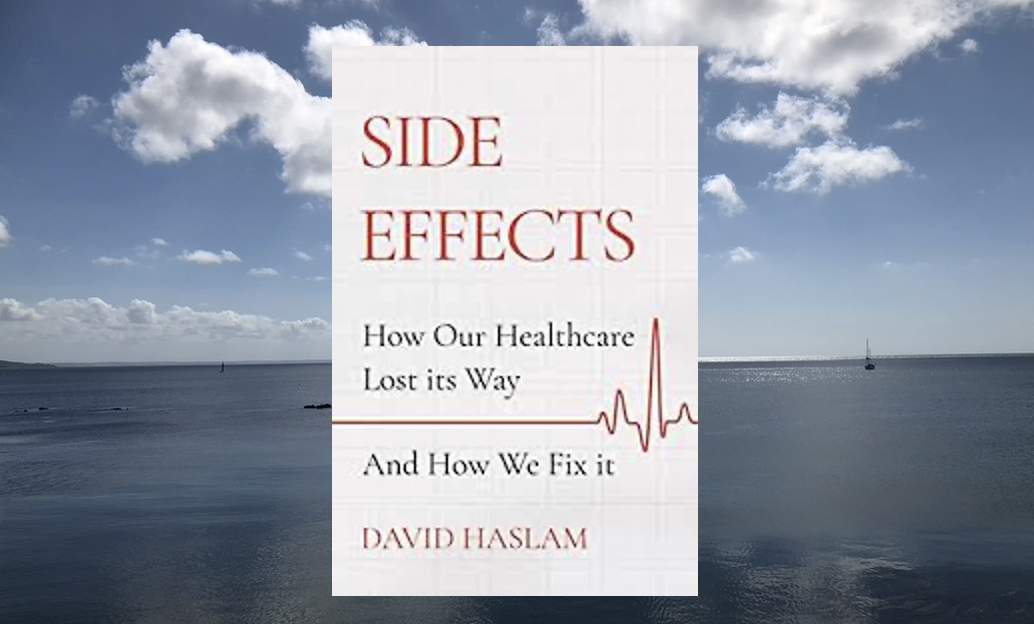 Terry Kemple is the Royal College of General Practitioners (RCGP) National Representative for Sustainability, Climate Change and Green Issues, and was President of the RCGP from 2015 to 2017. He is on Twitter: @TKemple
Terry Kemple is the Royal College of General Practitioners (RCGP) National Representative for Sustainability, Climate Change and Green Issues, and was President of the RCGP from 2015 to 2017. He is on Twitter: @TKemple
David Haslam is uniquely placed to reflect on the important questions of modern healthcare.
Born at the start of the NHS in 1949 he became a rural General Practitioner; chair, then President of the Royal College of General Practitioners; President of the British Medical Association; and for 6 years the Chair of the National Institute for Health Care and Excellence (NICE). He has a reputation for pithy observations about health care. He has also had his share of patient experiences- most recently cancer of his tonsil.
He believes we need to be clear about what the focus of healthcare should be, and attempts to describe and address many of the problems of modern healthcare mostly in relation to the higher income countries.
David Haslam is uniquely placed to reflect on the important questions of modern healthcare.
The title suggests a thoughtful understanding of what has gone wrong and a plan for its improvement. This might ask and answer all the important questions: What are we trying to achieve in healthcare? What do we know about how to do this? What can we actually do with our limited resources? How are we going to measure our success? And how will we review what we are doing? While it does not answer all these questions it is an easy-to-read reflection on being lost and how we got here. For example, reacting to political pressures, drifting into treatment- and technology-led decisions, short-term budgeting rather than the long-term planning, failing to address prevention and the social determinants of health. It is sprinkled with the breadth and depth of his experience, wise advice from others, data from numerous studies, international comparisons and insights from all over the world.
Anyone, particularly if they have the power to bring about improvement, who wants to understand how we got here, and what we could do differently in the future, should read this.
Most of these problems of health care have been known for years. The bigger problem is that we do not know how to agree on and effect the changes needed to have universal easy access to high quality health care at an affordable price.
The chapter headings tell the story of his reflections: ‘We’ve got a problem, How did we get here? Paying the Price, Why is it all so expensive?, Valuing a Life, Better than Cure, Overtreatment and Overdiagnosis, Hearts and Minds, Age and Ageing, And in the End…, Care in the Future, and A Way Forward.’
The causes of our problems are made clear. In future the changes we want to achieve must be based on evidence. Our decision making must be transparent. Waste, overtreatment, and overdiagnosis must be avoided. Prioritising expensive therapies for small numbers of patients rather than the comfort and care for much larger numbers of patients should be challenged. Service users as well as clinicians and managers must be involved in decisions about care.
…Haslam suggests many can be addressed if there is public debate and greater clarity about the aims and boundaries of healthcare…
There is no single solution to all the issues, but Haslam suggests many can be addressed if there is public debate and greater clarity about the aims and boundaries of healthcare with a rebalance of the focus of attention and allocation of resources from specialist care to public health and community care, and more resources for self-care.
Although his views are influenced by the impacts of the pandemic on healthcare and seem up to date, one criticism is that many of the suggestions relate to the familiar problems of yesterday. Just as the pandemic changed our priorities, any solutions must include the novel problems of today and tomorrow. These include how we transform healthcare and our ways of living and working to manage the climate and ecological crises, and cope with worsening planetary health. Another criticism is that If we want to fix healthcare, we must influence policy-makers more effectively. This is the perennial problem of leadership. ‘What have politicians and the national health service got in common with dogs watching television? They can see it but they just don’t get it’. We need medical leaders who are assertive, sense the political context, the competing influences, understand the policy processes, use high quality information, are flexible in their approach and can build the constructive honest broker relationships with politicians that result in the best outcomes for the health care. We need successful fixers.
Background image to book: Penzance coast, taken by Andrew Papanikitas 2022






